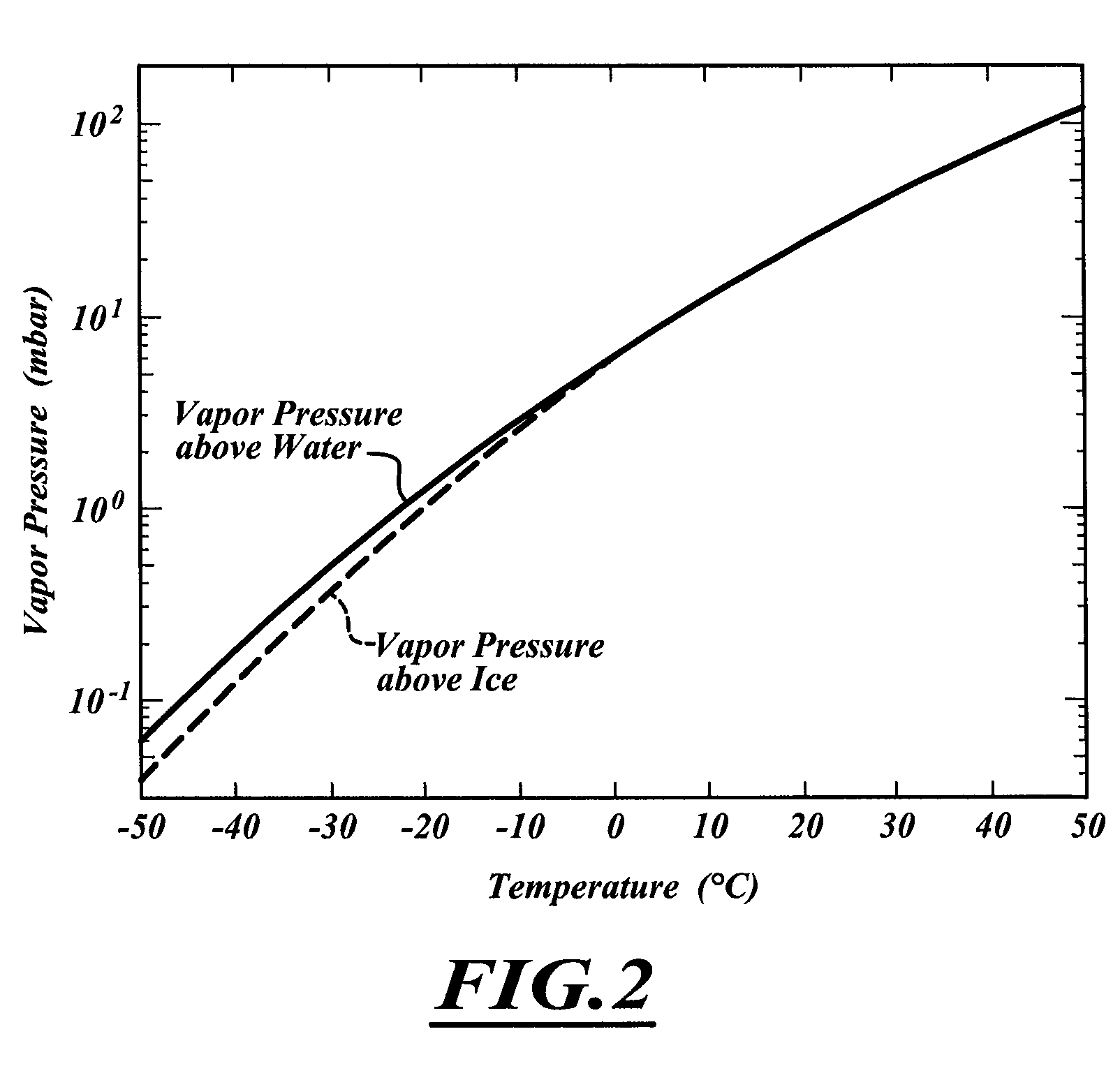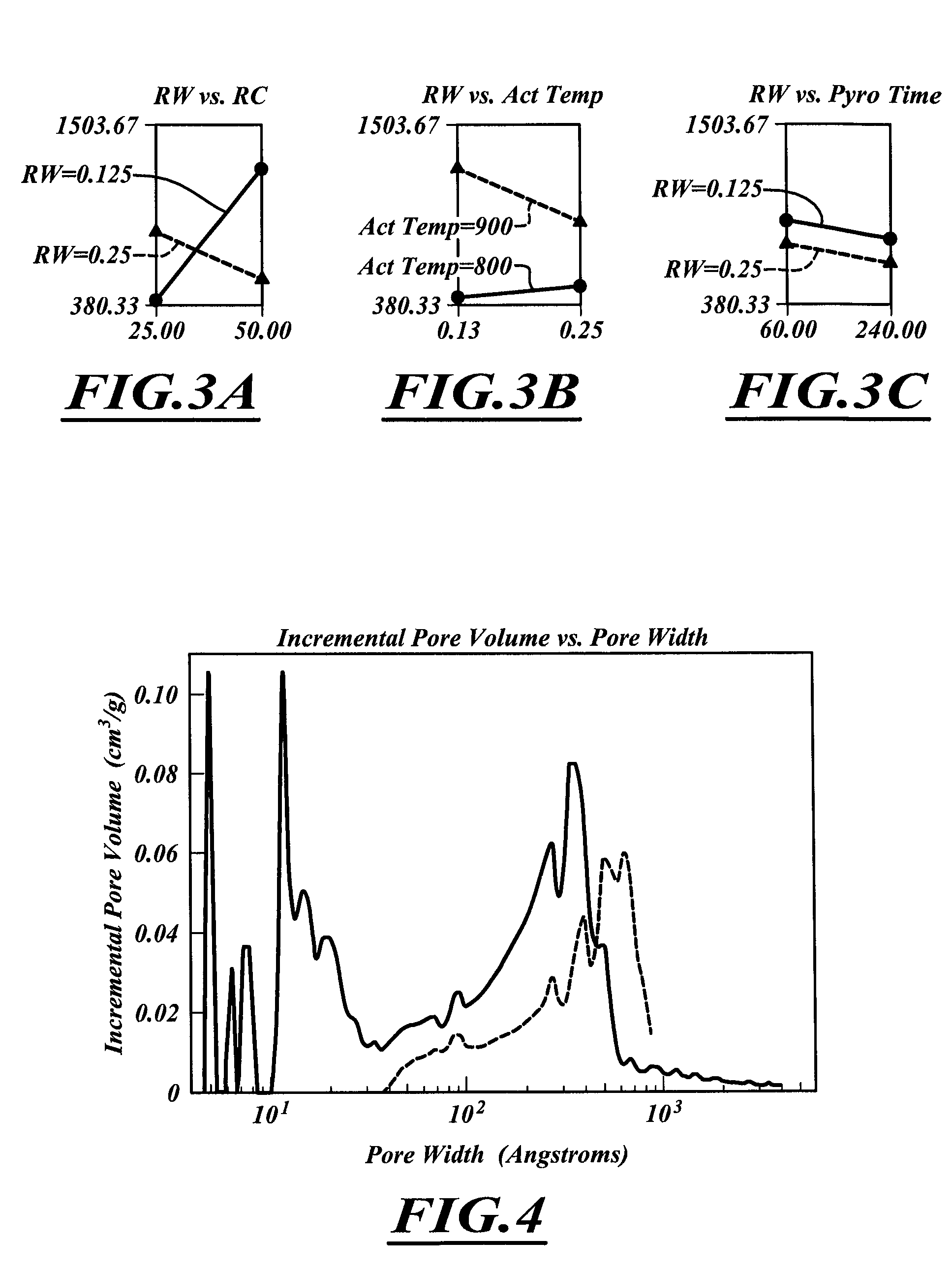Manufacturing methods for the production of carbon materials
a technology of carbon materials and manufacturing methods, applied in the field of polymer gels, polymer cryogels, activated carbon materials, can solve the problems of low process yield, inherently limited approach of precursor materials, and the preparation of activated carbon materials from synthetic polymers typically requires a time-consuming and expensive solvent exchange step
- Summary
- Abstract
- Description
- Claims
- Application Information
AI Technical Summary
Problems solved by technology
Method used
Image
Examples
example 1
Pore Size Distribution of Dried RF Cryogel and an Activated Carbon
[0197]FIG. 4 shows the pore size distribution of a representative RF cryogel (dashed line) and an activated carbon prepared from the same RF cryogel (solid line). FIG. 2 shows that the larger pores in the RF cryogel are carried over to the resulting activated carbon. This behavior provides an opportunity to control the larger pores in the activated carbon material through the chemistry and processing of the precursor gel. The data in FIG. 2 also demonstrate that the activation step opens the microporosity and thus provides an opportunity for independent control of this parameter.
[0198]FIG. 5 compares the pore size distribution for two activated carbons that were prepared from two different dried RF hydrogels. Specifically, the dashed curve represents data for an activated polymer cryogel prepared from a reaction solution having an RC of 50 and RW of 0.35, the resulting cryogel, which had a specific surface area of 603...
example 2
Taguchi L-18 Experimental Design Program to Illustrate Control of Product Characteristics Via Processing Parameters
[0200]A Taguchi L-18 experimental design program was executed to study the following 8 factors relating to the processing of high surface area activated carbon from resorcinol-formaldehyde (RF) polymers: Resorcinol / Catalyst Ratio (“RC Ratio”: 3 levels), Resorcinol / Water Ratio (“RW Ratio”: three levels), Particle Size at Freezing Step (“Sieving Size”: 3 levels), Quench Temperature (“Freezing Method”: 3 levels), Pyrolysis Time (2 levels), Pyrolysis Temperature (2 levels), Activation Temperature (3 levels), and Activation Time (3 Levels). The specific experimental plan as executed is presented in Table 1.
[0201]
TABLE 1Experimental parameters used to create a Taguchi L-18 experimental designPyrolysisPyrolysisTimeTempAct. TimeAct. TempRCRWSieveFreezeRun #(Min)(C.)(Min)(C.)RatioRatioSizeMethod1610005900250.151A2610007.595037.50.252B361000101000500.353C461100590037.50.253C56110...
example 3
Control of Dried RF Hydrogel Characteristics and Drying Time as a Function of Freeze Drying Variables
[0216]An RF hydrogel was prepared and sieved by hand to create polymer hydrogel particles as described below. The polymer hydrogel particles were frozen by gradually dropping the material into a stainless steel beaker containing liquid nitrogen. Once the entire sample was completely frozen, the frozen slurry of particles in liquid nitrogen was carefully poured into an 8-inch pan, which had been pre-cooled with liquid nitrogen, and the pan was placed on a lyophilization shelf (typically pre-cooled to at least −30° C.).
[0217]For each freeze drying run in which a combination of shelf temperature and chamber pressure were tested, three samples were generated with different loadings and sieving. Two thermocouples were placed within each sample, with care taken to place thermocouples in the center, bottom of each sample, preferably without having the thermocouple directly contacting the pa...
PUM
 Login to View More
Login to View More Abstract
Description
Claims
Application Information
 Login to View More
Login to View More - R&D
- Intellectual Property
- Life Sciences
- Materials
- Tech Scout
- Unparalleled Data Quality
- Higher Quality Content
- 60% Fewer Hallucinations
Browse by: Latest US Patents, China's latest patents, Technical Efficacy Thesaurus, Application Domain, Technology Topic, Popular Technical Reports.
© 2025 PatSnap. All rights reserved.Legal|Privacy policy|Modern Slavery Act Transparency Statement|Sitemap|About US| Contact US: help@patsnap.com



